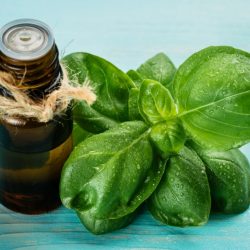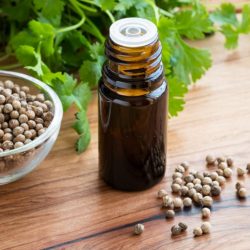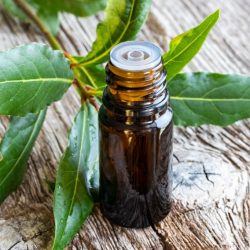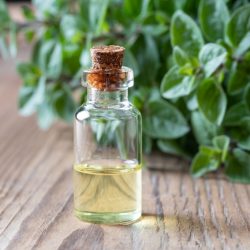Tarragon, whose botanical name is Artemisia dracunculus, belongs to the Asteraceae family. Its producing organs are its aerial parts.
The history of tarragon
Tarragon was introduced to Europe during the Crusades. But it has a long tradition as a medicinal plant and spice in Asia and Siberia. As well as being used in cookery books, tarragon has been used by apothecaries and master chefs since the Middle Ages.
Its origins
Tarragon is a wormwood plant with the scientific name Artemisia dracunculus. Artemisia is a genus created in 1753 by Carl von Linné (1707-1778). It evokes the hunting goddess Artemis from Greek mythology (Diana in Roman mythology), who was also associated with the moon and considered to be the protector of women.
Since tarragon’s seeds are infertile in our Western soils, it must have come from somewhere else. So where does it come from? The origin of tarragon in the sixteenth century was imagined to be rather bizarre, to say the least: the plant “came from flax seeds that had been enclosed in a radish or an onion and then buried in the ground”, according to vegetable merchants. Some authors had no problem with this and accepted the idea with great credulity, while others rejected it and set out to find, as best they could, the origin of this plant that was not indigenous to Europe. They even thought they recognised it in the work of Dioscorides.
If tarragon bears the nicknames dragon and serpentine, it’s because at the time of Dioscorides (who didn’t know it), the dragon herb was thought to be capable of overcoming snake bites (as mentioned above), a virtue taken up again in the 11th century by Avicenna. This equivocation undoubtedly goes back to Pliny, who referred to dracunculus, a term that could be translated as “little dragon”, in connection with another, larger one, drakontia, transposed into tharchoûm, then tarkhoum in Arabic, targon and finally tarcon in the 13th century. At least, that’s how Ibn Al-Baytar and Simon Januensis referred to it in the century when tarragon arrived in Spain via the Moors.
Unless it had been introduced to Europe earlier, as claimed by Symeon Seth, a Byzantine physician and botanist of the 11th century, or one of the many plants brought back from the Crusades, which, in the case of tarragon, seems unlikely. For this to happen, the crusaders would have had to travel far to the east, well beyond the East.
Even a thousand years ago, we didn’t know where tarragon came from, and we don’t know whether what we called tarragon with the words of the time is really the tarragon we all know today. Especially as the serpentine artemisia dracunculus clouds the issue. For example, the Capitulary of Villis mentions the presence of a plant labelled dragontea which, in name at least, bears similarities to dragon herb.
In the Middle Ages
This magnificent aromatic herb originated on the steppes of Siberia and China. After migrating as far as the Middle East, it was brought back to Europe in the Middle Ages by the Crusaders, who used it as a liqueur around 1548. It appeared in France in the 16th century as one of the herbs cultivated by monks. It was mentioned by Gérard in his herbarium in 1597.
Avicenna (980-1037) recommended it in his Canon of Medicine to “expel air from the belly and combat intestinal fermentation”.
In France, monks began growing it in the 15th century for its medicinal and aromatic qualities. Tarragon is a remarkable antispasmodic, acting on the muscles and nervous system. It improves digestion by stimulating digestive secretions and preventing food from accumulating in the stomach. Tarragon is said to be an effective painkiller, particularly in the case of painful menstruation, as it acts on muscle cramps and contractures. Finally, tarragon is also said to have antihistaminic properties, helping to combat allergies.
The dragontea in the Carolingian capitulary cannot be tarragon, as Alain Canu explains: “This dragontea, which Sprengel believes to be tarragon, Artemisia dracunculus by Linnaeus, is described in many different ways in a 9th century manuscript. The article on dragontea lacks, like almost all those on other plants, a description of its botanical characteristics, but it is accompanied by a coloured figure that was good enough for the time. Now, this figure bears no resemblance to tarragon, whereas it bears a very close resemblance to Linnaeus’s snakewort, Arum dracunculus[…]. The dragontea is therefore not the tarragon, but the snakewort”. Given that tarragon is known as serpentine, this increases the risk of confusion.
Tarragon is therefore not a typically medieval aromatic plant in the same way as sage and hyssop, for example. If it appeared in the Middle Ages, it was primarily under the influence of Arab physicians, including Avicenna, who, in The Canon of Medicine, indicated its beneficial effects in expelling air from the belly and pestilence (this antiseptic virtue of the atmosphere in times of plague was taken up by Matthias de l’Obel much later); others recommend tarkhoum as an emmenagogue, heart tonic and stomach tonic.
It is therefore inconceivable to imagine medieval cuisine using tarragon, at least in France at the time.
During the Renaissance
It wasn’t until the 16th century that tarragon’s long, thin, fragrant leaves were used in cooking. According to “Le Grand Robert de la langue française”, the term estragon appeared in the French language in 1601. A century earlier, it was known as estargon, a corruption of targon, which was used in the 16th century. Depending on the region and the period, tarragon has been given various names: armoise âcre, arragone, dragon, dragonne, estragon français, estrôon vrai, fargon herbe dragon, gardon, petit serpent, serpentine, tarchon, targon, tarragon. This last name is also used by the English.
After this muddle worthy of a ball of thread tangled by a mischievous kitten, we can at last relive this aptly named Renaissance period. First of all, the plant is mentioned in various illustrated works, making it easier to identify. Rembert Dodoens called itdragon herb. Matthiole calls it targon. They both point out that it still only plays a strictly condiment role. Long before them, the French botanist and physician Jean Ruel (1474-1537) gave a remarkable description of it in his De natura stirpium. He stated that “it is one of the most pleasant salads that needs neither salt nor vinegar, because it has the taste of these two condiments”.
Throughout the 16th century, tarragon was regarded as nothing more than a stimulant for the taste buds. That all changed in the 17th century, when tarragon entered not only the culinary repertory, but also the apothecary’s and master chef’s lair. As this new century dawned, the same uses were made of it as were reserved for other Artemisias. As Nicolas Lémery (1645-1715) put it: this plant “excites urine and women’s months, it drives away greens, it provokes the appetite, it resists venoms, it is good for scurvy, it makes you spit when chewed”. Add to that its stomachic, anti-arthritic and antihydropic properties, and you’ve got the whole story.
But depending on your speciality, you’ll hear different things about it. The gardener and agronomist who created the royal kitchen garden at Versailles, Jean-Baptiste de la Quintinie (1626-1688), praised its cultivation and essentially culinary use. He considered it to be one of the most precious perfumed supplies that could be made available to cooks and to the palates of their guests. Valmont de Bomare (1731-1807), a naturalist, also set out to describe it in gastronomic terms in his famous six-volume encyclopaedia. He wrote that it is a herb that enhances the flavour of salads and lifts the inertia and dullness of lettuce.
Jean-Baptiste Chomel (1709-1765) once again turned his attention to medicine. He recommended tarragon above all for a series of gastrointestinal disorders: stomach weakness, indigestion, nausea. Tarragon fell further and further into the hands of the cook, until Roques sealed its fate, so to speak: “Tarragon is an aromatic plant that medicine has ceded to the culinary arts, and rightly so, as it is quite rich in stimulating plants”.
Today
Tarragon has become an essential spice and condiment in French cuisine. It is used in the recipe for the famous Béarnaise sauce, to season salads and to flavour poultry and fish. Be careful to keep a light hand when using tarragon, as its powerful flavour can quickly dominate a dish.
Today, after much confusion, we still don’t know exactly when tarragon first came to our shores. If we don’t know when it arrived, that’s fine, but there are also doubts and difficulties in determining its place of origin. In the Near East, Middle East, Central Asian steppes, Russian and Siberian river valleys, Tartary, etc., no effort has been spared in determining its origins, which, as you can see, are many and varied. Tarragon grows wild in the west of North America (Alaska), in an area immediately opposite Siberia. This may well be the original home of tarragon.
According to some authors, the misunderstanding stems from the fact that tarragon in our latitudes has a milder taste than its Russian counterpart. From this, it was deduced that only an oriental climate could give tarragon its sublime flavour. We can conclude that if tarragon’s passport is vague, to say the least, so is its birth certificate.
What are the pharmacological properties of tarragon essential oil?
Antibacterial properties :
Tarragon essential oil is anti-infectious in the urinary tract, antibacterial against Staphylococcus aureus and Escherichia coli, and antifungal against candida.
Digestive properties:
A digestive stimulant, this essential oil also has anti-fermentative and intestinal antiseptic properties. Tarragon has also been shown to be a stomachic, aperitif and carminative.
Anti-allergic properties:
Also anti-allergic, tarragon essential oil is therefore antihistaminic and anti-inflammatory.
Activity on the central nervous system :
As a neuromuscular antispasmodic, this essential oil is anticonvulsant and sedative. It is therefore a psycho-emotional tonic oil.
Its anticholinesterase activity is interesting; it increases cholinergic activity in the central nervous system. It is therefore used to treat Alzheimer’s-type dementia (there is a reduction in cholinergic neurons in the cortex and hippocampus in patients suffering from this type of dementia). Cholinesterase inhibitors increase acetylcholine levels at neuronal synapses by inhibiting the enzyme responsible for degrading acetylcholine. This promotes an increase in cholinergic transmission.
Known or suspected mode of action:
Methyl-chavicol (= estragole) is a smooth muscle antispasmodic
Does tarragon essential oil require any precautions for use?
- Contraindicated in pregnant or breast-feeding women
- Not for prolonged use, do not exceed a maximum of 40 mg, i.e. 2 drops per day for 2 to 4 days, or 20 mg per day for 2 weeks of treatment
- Do not exceed 14 days of treatment
- Skin irritation (dermocaustic) possible in pure form, dilution required
- Risk of hepatotoxicity per os
- For adults only
- Not recommended for heavy smokers or people with liver problems
- Not recommended in cases of anticoagulant treatment or coagulation disorders
- Caution with all drugs likely to increase the risk of haemorrhage (aspirin, oral or injectable anticoagulants, blood thinners)
- Risk of interaction with oral antifungal agents such aseconazole, etc.
Medical literature and clinical trials:
- Maham M, Moslemzadeh H, Jalilzadeh-Amin G. Antinociceptive effect of the essential oil of tarragon (Artemisia dracunculus). Pharm Biol. 2014
- Raeisi M, Tajik H, Razavi RS, Maham M, Moradi M, Hajimohammadi B, Naghili H, Hashemi M, Mehdizadeh T. Essential oil of tarragon (Artemisia dracunculus) antibacterial activity on Staphylococcus aureus and Escherichia coli in culture media and Iranian white cheese. Iran J Microbiol. 2012
- Meepagala KM, Sturtz G, Wedge DE. Antifungal constituents of the essential oil fraction of Artemisia dracunculus L. Var. dracunculus. J Agric Food Chem. 2002
- Sayyah M, Nadjafnia L, Kamalinejad M. Anticonvulsant activity and chemical composition of Artemisia dracunculus L. essential oil. J Ethnopharmacol. 2004
- Dohi S, Terasaki M, Makino M. Acetylcholinesterase Inhibitory Activity and Chemical Composition of Commercial Essential Oils. J Agric Food Chem. 2009





